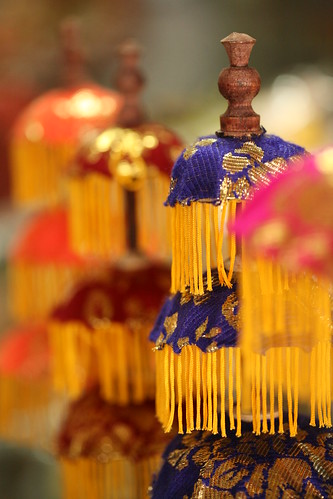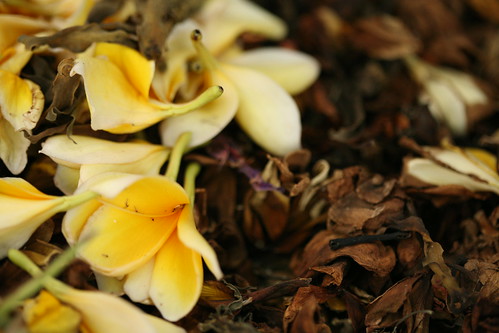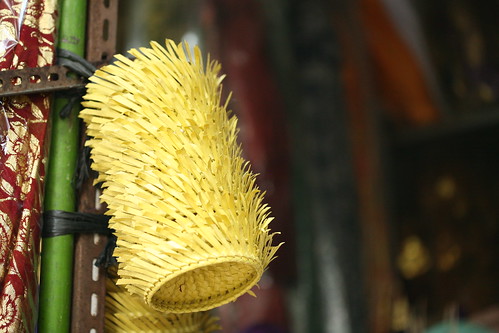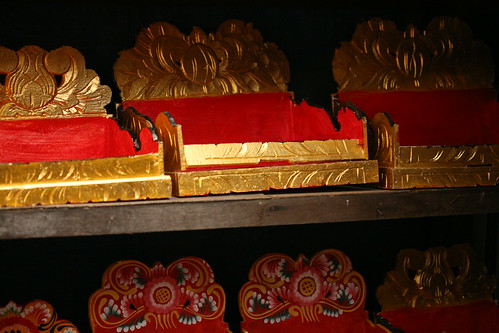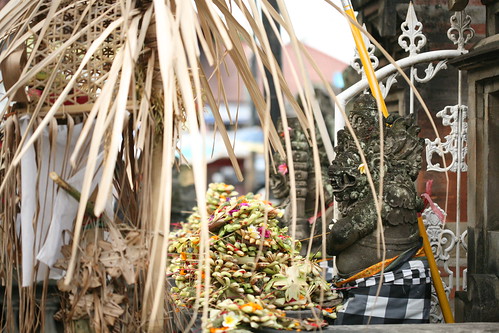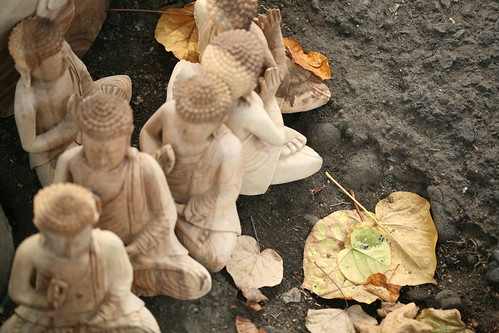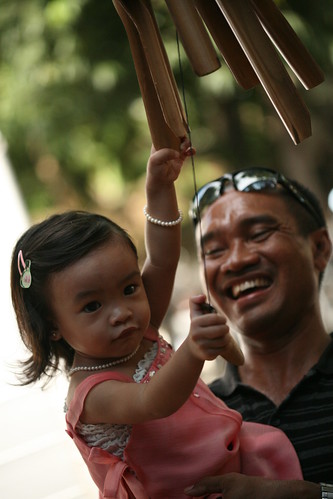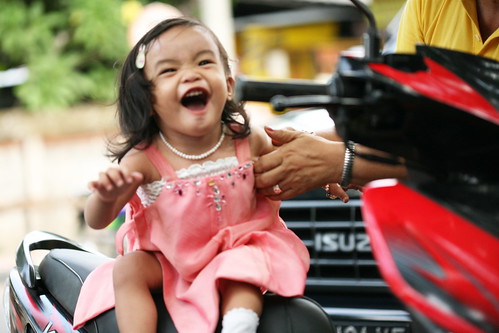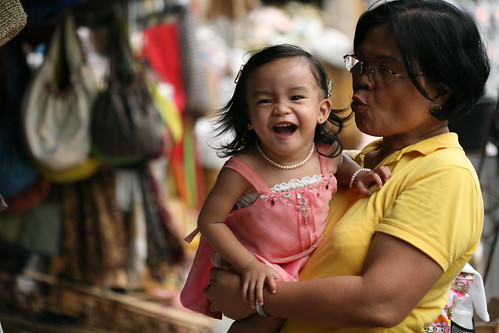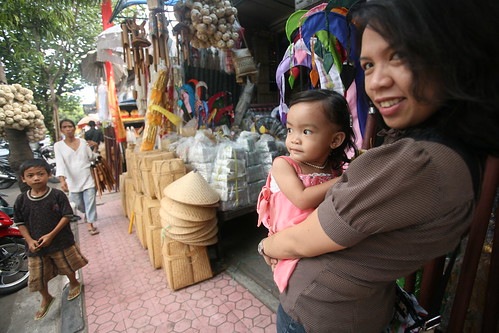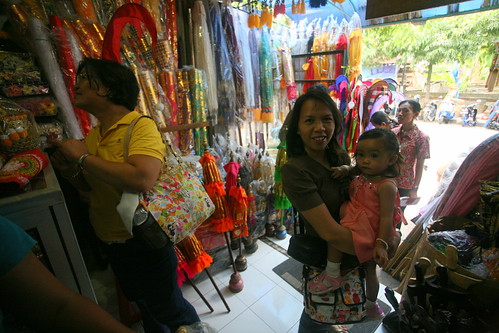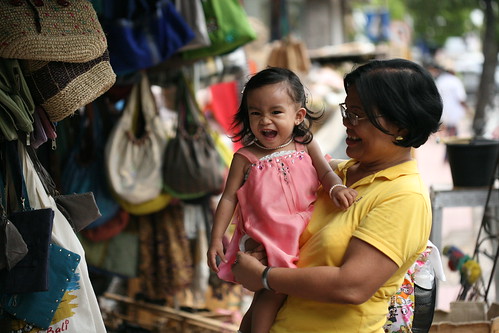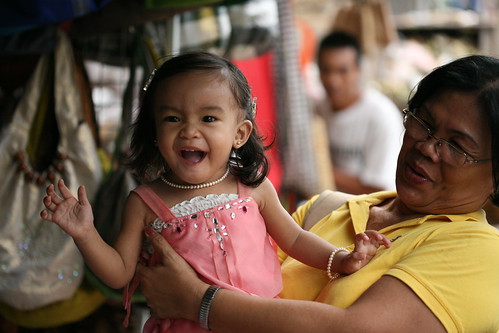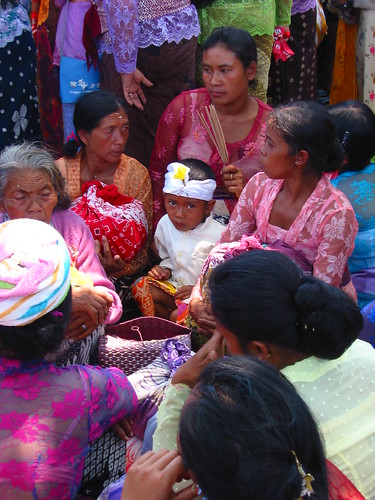continued from Portraits in the Temple of Ngusabe Sukawati.
The meped is the ceremonial procession in Bali. To the public, it often is the highlight of temple anniversaries, religious observances and other rites. As in a parade of any other culture, it is a showcase. Of course there is meaning and reason to the parade, from the spiritual to the social, but it is an occasion to be see and to be seen.
As I’ve described in the first part, there is a unique attribute to the meped of the Ngusabe celebration in Pura Dalem Gede Sukawati that I was excited to watch: the fabulous formal costumes.
After having my fill of portrait shots in the temple (part 1), I decided it was time to find a good spot for the procession. I wanted to shoot from an elevated vantage point and I was not in any mood knocking on somebody else’s door (not that homeowners would likely let strangers in either). There was only one obvious place: the Sukawati public market. Of the 4 buildings of the market complex spread at the highway intersection, the best vantage point would be second floor balcony of the food market building as it directly looks over the road.
We were just in time. Shortly after we settled in a spot, we could already hear percussive sound of the drums and cymbals approaching. The temple is only about 4 blocks away. Like in most parades, music plays an integral role, beckoning and ushering the mass of humanity forward. Music, in this case was the traditional gamelan orchestra. Preceded by ceremonial penjor banners and pajeng umbrellas, the gamelan must be more than 20-man strong. Immediately following the gamelan were women dressed in uniform orange kebayas and sarung, which is standard temple wear.

phototip: An elevated vantage point always provides you a more comprehensive view of any parade.
Canon EOS 350D, 0.004s, f/6.3, 35mm, ISO 100, +2/3EV
the front end of the meped parade, Sukawati, Gianyar, Bali, Indonesia
The first specially dressed participants were the young boys. Persuading boys to wear the formal attire must be difficult as there weren’t a lot of then. Probably they were less than 20 in all.

phototip: Tilting the frame can be interesting.
Canon EOS 350D, 0.002s, f/6.3, 90mm, ISO 100
young boys joining the meped parade, Sukawati, Gianyar, Bali, Indonesia
Next came the young girls of prepubescent age. They literally looked like walking dolls, sashaying slowly in their tightly wound skirts. Being not older than twelve, they, like their boy counterparts were exempted from walking barefoot, as dictated by the strict adat rule associated with the formal costume they wear.

phototip: A diagonal can be a pleasing composition.
Canon EOS 350D, 0.005s, f/6.3, 135mm, ISO 100, +2/3EV
prepubuscent girls joining meped parade, Sukawati, Gianyar, Bali, Indonesia
Older participants had little choice however. When the teeners came – they came next after the girls – practically all of them were barefoot. Walking on hard asphalt certainly entailed stoic sacrifice. Even at 4PM, the temperature of the road should still be scalding in hot and humid Bali. Some did wear sandals but they were few and far between. Going barefoot must be like a badge of courage.

phototip: The backside can be as interesting as the front.
Canon EOS 350D, 0.008s, f/6.3, 75mm, ISO 200, +2/3EV
teenage girls joining meped parade, Sukawati, Gianyar, Bali, Indonesia
The order of the meped seems to be arranged according to age. As befitting their maturity, the older participants got to wear more elaborate the costumes.

phototip: Incorporate long shadows in the composition.
Canon EOS 350D, 0.001s, f/6.3, 210mm, ISO 400
teenage girls joining meped parade, Sukawati, Gianyar, Bali, Indonesia
Among the more ornate attire that afternoon was the young lady below. From the heavily gilded songket skirt to the heavy 2-feet gold foil headdress, she was a vision of magnificence. Her bangles are definitely real gold as are her traditional waist band, arm bracelet and bib.

Canon EOS 350D, 0.001s, f/6.3, 300mm, ISO 400
Sukawati, Bali, Indonesia
a young lady in the meped parade, Sukawati, Gianyar, Bali, Indonesia
Unquestionably, the parade was well attended. Traffic literally was stopped as the major roads around the temple and market were halved. Also note the mermaid tail of the kamben sarung skirts. Walking gracefully while dragging the long end of the skirt on the ground takes skill and practice. And if the the tail got in the way, the girls just easily aligned it by a swift flip of a foot.

Canon EOS 350D, 0.003s, f/6.3, 120mm, ISO 400, +1/3EV
young ladies in the meped parade, Sukawati, Gianyar, Bali, Indonesia
There were also groups within the parade. I am assuming that they were certain clans who wanted to parade in uniform. One of the most striking was this group of ladies of various ages in gold kamben sarung brocade and matching gold and fuschia anteng tops. With them in the picture below are two male elder regents, called patih.

Canon EOS 350D, 0.002s, f/6.3, 75mm, ISO 400, -1/3EV
the meped parade, Sukawati, Gianyar, Bali, Indonesia
The final file before the general public was a batch of women wearing white. I think they belong to the brahamana caste, as the color is reserved only for priests who dispense religious duties inside the temple during religious ceremonies. Closing the procession is another gamelan, although the musicians look like a junior bank composed mostly of teeners. They must be the orchestra in training.

Canon EOS 350D, 0.004s, f/5.6, 55mm, ISO 200
Sukawati, Bali, Indonesia
The parade route was around 3 kilometers long. Starting from the temple, it wound around the art market and stopped at a juncture near a river bank. The parade was just midway.
Part 3: Closing the Ngusabe

